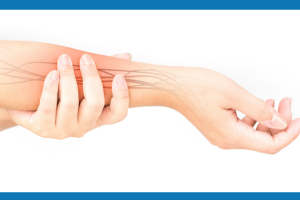Scapholunate Ligament

Scapholunate Ligament Injury
The wrist is a complex joint that allows movement by connecting the forearm to the hand. It is made up of eight small bones called carpals that connect to two long bones in the forearm (radius and ulna). The scapholunate ligament connects the scaphoid (base of the thumb) and lunate (center of the wrist) carpal bones, which are aligned next to each other.
At times, this scapholunate ligament can get injured due to various reasons. This injury can cause a partial or complete tear of the ligament as well as bone separation. Scapholunate ligament injuries are common and are usually caused by a sudden increase in wrist stress caused by a fall or sports injury.
If you are looking for Scapholunate Ligament treatment in Dubai, our hand and wrist specialist, Dr. Ehab Bassim Aldlyami, can be your ideal choice.
What is Scapholunate Ligament injury?
The scapholunate joint is critical to the wrist joint’s stability. It is frequently injured during sports, such as when you fall heavily onto your hand. It can also be injured as a result of chronic overuse, such as when performing manual labor or lifting heavy weights in the gym. It causes wrist pain that is exacerbated by gripping and weight bearing through the hand, such as during a press-up.
When it comes to wrist ligament injuries, wrist arthroscopy is the gold standard and the preferred diagnostic technique for scapholunate ligament reconstruction with sufficient conclusive properties.
Symptoms of Scapholunate Ligament Injury
The following are the symptoms of scapholunate ligament injury:
- Wrist joint pain and swelling
- Pain exacerbated by weight bearing, such as during a press up
- Instability and weakness of the wrist
Diagnosis
For a proper scapholunate ligament injury treatment, a concrete line of clinical assessment is necessary. A combination of an interview with a series of clinical tests helps the clinician determine the source of your pain. Further, if you are suspected of having a scapholunate injury, you may be referred for an MRI to confirm your diagnosis.
Scapholunate Ligament Injury Treatment
Conservative Treatment Options
The level of damage that has occurred determines the treatment for a scapholunate ligament injury. If the ligament is intact and the joint is stable, a short period of immobilisation (wrist brace), icing, rest, and a progressive strengthening program (by your physiotherapist) will suffice.
However, if the ligament is ruptured and the underlying joint is unstable, or if conservative treatments have failed, an injection or surgical intervention may be required.
When conservative treatment methods don’t work
If conservative treatment options do not relieve your symptoms, you may need to consider a corticosteroid injection. Corticosteroid injections are most commonly used to treat pain and inflammation caused by injury.
This potent anti-inflammatory medication can be used to control your symptoms, allowing you to participate in physiotherapy exercises and thus heal your injury. Steroid injections guided by ultrasound are significantly more accurate, cause fewer complications, and provide faster pain relief.
Surgical Options
When non-invasive methods don’t work, the doctor may go ahead with surgical options for Scapholunate Ligament injury treatment.
Early Operative Intervention
In a young person with good bone and no complicating factors, the usual recommendation is to repair the ligament surgically. This procedure involves opening the wrist joint to realign the scaphoid and lunate bones, then securing them with metal pins before reattaching the ligament to the bone with a special bone anchor screw.
Late Operative Intervention
If the injury is discovered more than a few weeks later, it may be too late to repair the ligament directly – because this ligament is located inside a joint, joint fluid tends to get to work, resorbing the injured ligament until there is no ligament left to repair. Surgery to reconstruct the ligament using a portion of a nearby tendon is recommended in some cases. The procedure is similar to the early repair but with additional work to reinforce the ligament with a tendon graft.
Post-operative Results
The aim of surgery is to restore the normal relationship between the scaphoid and lunate bones, but because all ligaments heal with scar tissue rather than normal ligament, the spring is never restored. This stiffens the wrist, and most people only have 50-60% of their normal wrist movement.
Looking for accurate Scapholunate Ligament treatment in Dubai - Consult Dr. Ehab Bassim Aldlyami
Dr. Ehab Bassim Aldlyami is an experienced orthopedic surgeon in Dubai who specializes in the diagnosis and treatment of scapholunate ligament injuries. He offers a comprehensive range of treatments to help minimise pain, restore function, and prevent further injury. With his expertise and advanced surgical techniques, you can rest assured that your scapholunate ligament injury will be treated effectively with minimal disruption to your daily life.
Book an appointment to understand more.




